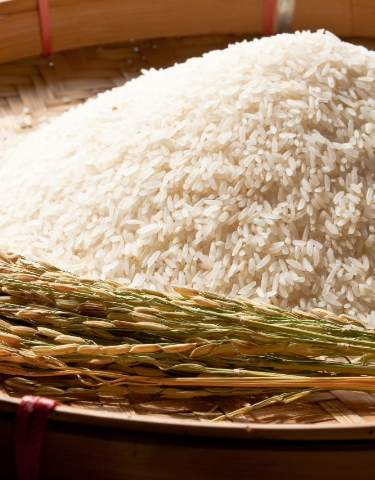Introduction
Rice, or gohan, is more than just a staple food in Japan; it is deeply embedded in the nation’s history, culture, and identity. For centuries, its cultivation has been a cornerstone of the Japanese way of life, symbolizing prosperity and self-sufficiency. Recent years have seen a confluence of unprecedented challenges, from extreme weather events and shifting geopolitical landscapes to demographic changes and evolving consumer preferences, collectively culminating in a burgeoning rice crisis in Japan.
This situation, characterized by soaring prices, supply chain vulnerabilities, and the specter of shortages, presents a quintessential risk management challenge. It is no longer merely an agricultural issue but a complex, multi-layered problem that demands a strategic approach. This blog examines Japan’s rice crisis through a risk management lens, proposing a robust framework for building long-term resilience.
Risk Identification – Unpacking the Threats
The first and most critical step in managing any crisis is to thoroughly identify and understand the underlying risks. Japan’s rice crisis is fueled by a complex interplay of the following interconnected risk categories –
Environmental Risk – The most immediate and visible threat is climate change. Climate risks such as extreme heatwaves, particularly during the critical shinka (ripening) period, can significantly damage crops and lower yields. For instance, high temperatures cause rice grains to become chalky and brittle, reducing their quality and market value. Conversely, increasingly frequent heavy rainfall and typhoons lead to widespread flooding, destroying paddies and disrupting the harvest. Unseasonal weather patterns erode productive capacity and force early sales, deepening volatility in prices.
Economic Risk – The global economic environment adds another layer of complexity. Rising input costs, including fertilizers, fuel, and labour, are squeezing farmers’ profit margins, discouraging production. Furthermore, a weak Japanese yen makes imported goods more expensive, creating a double-bind where importing rice becomes a costly contingency measure.
Market Risk – The crisis also highlights the risk of market concentration, as a heavy reliance on a single staple crop makes the agricultural sector particularly vulnerable to shocks. The high domestic price of rice relative to international varieties, a consequence of protective tariffs and subsidies, creates a pricing risk that encourages a shift away from traditional consumption. Panic buying and hoarding, fueled by earthquake rumors and uncertainty, depleted stores and destabilized markets. A surge in tourism and intensified demand from hospitality sectors tightened supply, straining inventories in key cities.
Geopolitical and Supply Chain Risks – While Japan is largely self-sufficient in rice production, geopolitical tensions can still impact the supply chain. Global supply disruptions, whether from conflicts, pandemics, or trade disputes, could threaten the import of alternative grains and fertilizers, raising prices and creating scarcity. The crisis also exposes food security risks, as a nation that has long prided itself on its agricultural independence now faces the stark reality of its reliance on complex global supply chains for essential inputs and potential imports.
Regulatory Risk – Government subsidies encouraged acreage reductions, undermining rapid response capacity during surges in demand for rice. Historically restrictive tariffs and quotas limited imports, amplifying production shocks.
Social Risks – Japan’s aging population and declining birth rate pose a profound long-term risk to the agricultural sector. The average age of farmers is now over 67, and there is a significant labour shortage as younger generations migrate to urban centers for non-agricultural work. Young people eschew agriculture for urban opportunities, causing abandoned fields and declining productivity. This demographic shift threatens the very foundation of rice cultivation, as sustainable farming knowledge and skills are not being passed down. Additionally, evolving consumer habits, including a preference for bread and other grains, reduce domestic demand for rice, creating a vicious cycle where a declining market discourages new entrants and investment in the sector.
Risk Mitigation Strategies
- Breeding heat-resistant rice varieties and investing in crop insurance schemes to buffer against environmental risks such as extreme weather.
- To address supply chain risks, Japan must look beyond its borders. This involves diversifying the origin of imported grains and fertilizers to reduce reliance on single countries or regions.
- To reduce economic risks associated with farming, policies must shift from traditional subsidies to ones that encourage innovation and efficiency. This could include targeted financial incentives for farmers who adopt new technologies or diversify their crops. The government could also explore strategies to encourage investment in agricultural startups and provide training programs for young people interested in modern farming techniques.
- Japan must revitalize its agricultural workforce by incentivizing young participation through training, grants, and adoption of modern agricultural methods such as robotics and AI-driven machinery. Community engagement campaigns must be conducted to rebrand farming as an innovative and rewarding career.
- Market Risks in Japan’s agriculture sector can be countered by introducing gradual relaxation of import restrictions to allow for emergency sourcing and price stabilization. The strategic release of national reserves and dynamic, market-based distribution systems can be used to optimize geographic allocation of rice. Subsidies can be reformed to promote flexibility and responsiveness. Demand can be managed by innovating with substitute grains, launching public information campaigns to counter panic buying, promoting dietary alternatives, and offering transparency on supply availability. Suppliers can collaborate with the hospitality sector to forecast demand.
- The future of Japanese agriculture lies in smart farming. This includes the adoption of precision agriculture using IoT (Internet of Things) sensors to monitor field conditions in real-time, automate irrigation, and predict harvest cycles. Drones equipped with multispectral cameras can provide early warnings of crop disease or stress. Using satellite data and machine learning for climate modelling and crop health monitoring can provide data-driven insights for optimal planting and harvesting schedules. Domestically, implementing blockchain technology can enhance transparency and traceability. This not only builds trust but also helps in quickly identifying and isolating issues in the event of a contamination or quality control problem. The development of climate-resilient rice varieties through genetic research is also a crucial long-term strategy.
Applying Enterprise Risk Management Frameworks to navigate Japan’s Rice Crisis
ISO 31000 – This international standard provides a systematic approach to manage enterprise-wide risks. The first step, ‘establishing the context,’ involves understanding the internal and external environment—from climate science and market trends to cultural consumption habits. ‘Risk assessment’ includes identifying, analyzing, and evaluating the risks identified in the first step. For instance, a heatwave (the event) has a high likelihood and a significant impact on crop quality (the consequence), which can be rated on a risk matrix. The ‘risk treatment’ phase then focuses on implementing the mitigation strategies, from technological adoption to policy changes. The ‘monitoring and review’ incorporates continuous feedback loops to adapt to new threats and evaluate the effectiveness of existing controls.
COSO – The COSO framework provides a holistic view on risks. The ‘governance and culture’ component emphasizes the need for risk-aware decision-making at all levels, from individual farmers to government ministries. ‘Strategy and objective-setting’ involves defining clear goals, such as reducing dependency on external factors and stabilizing domestic rice prices. The framework’s emphasis on ‘information, communication, and reporting’ highlights the need for a transparent system to share real-time data on weather, crop yields, and market prices, empowering stakeholders to make informed decisions.
Insights from the Institute of Risk Management’s Horizon Scanning guide
Horizon Scanning is critical for anticipating future risks. This involves looking beyond the immediate crisis to identify potential future threats. In Japan’s rice crisis, horizon scanning can be used to identify new pathogens resistant to current pesticides or the long-term impact of rising sea levels on rice paddies. By systematically scanning for ‘signals of change’, policymakers can prepare for future disruptions long before they become a crisis.
Risk Management Lessons from Japan’s Rice Crisis
The Japanese rice crisis offers invaluable lessons for any sector grappling with systemic, interconnected risks. The primary lesson is that long-term resilience is a product of proactive planning, not reactive problem-solving. Over-reliance on traditional methods and historical precedents can blind a system to emerging threats. The crisis underscores the need for diversification—of crops, of supply chains, and of thought. It highlights the importance of technology as an enabler of resilience, not just a tool for efficiency. Crisis communication and consumer education are indispensable to prevent market disruptions. Perhaps most importantly, the crisis demonstrates that agricultural risk management is a shared responsibility. All stakeholders—farmers, government, technology firms, and consumers – must have risk understanding and operational alignment.
Conclusion: A Path Towards Resilient Agriculture
Japan’s rice crisis is a watershed moment for the agricultural sector, highlighting vulnerabilities and opportunities for building resilience. The future demands:
- Institutionalization of risk management practices—periodic audits, scenario simulations, and continuous learning from post-incident analysis.
- Deeper integration of technology-powered farming, and adaptive policy frameworks.
- Sustained commitment to training, youth engagement, and the revitalization of rural communities.
- Multi-stakeholder collaboration for food security, where government, private sector, and civil society co-create a responsive agri-food system.
In sum, the lessons from Japan’s rice crisis transcend borders, providing a blueprint for countries grappling with unpredictable agricultural landscapes. The journey to a more secure future for Japan’s ‘sacred grain’ lies in strategic foresight and the courageous adoption of innovation. The synthesis of technology, policy reform, and risk management will ensure future generations can rely on stable and accessible food resources.















